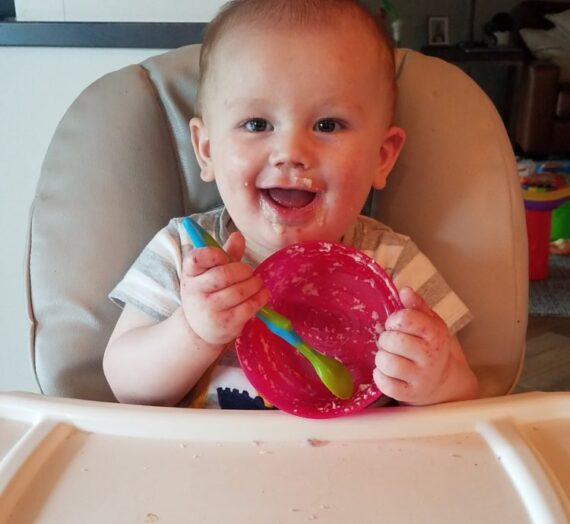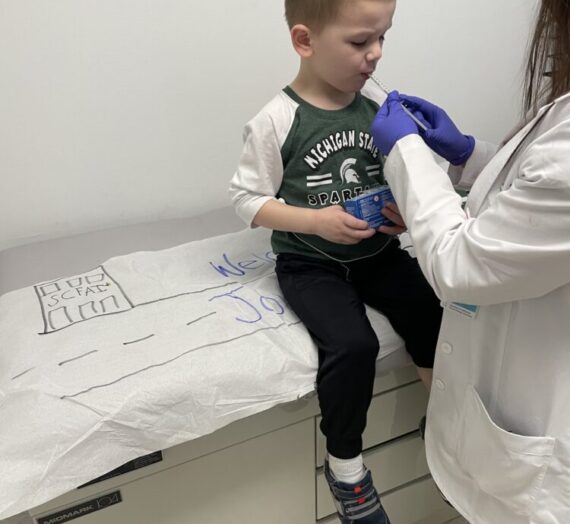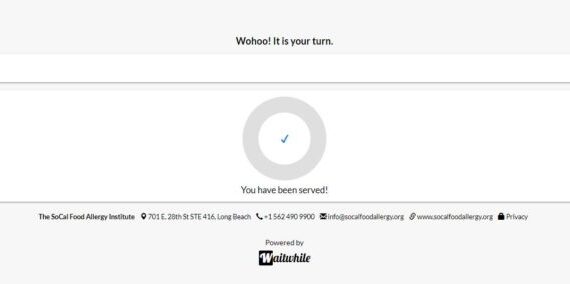When we went to Jonathan’s Launch Visit in November we finally received his treatment plan. This plan is tailored to Jonathan, his specific allergens and his level of reaction. I will try my best to explain the plan to the best of my ability, but I am not a doctor. I’m sure there are others who could explain the program more eloquently, but this is my quick version.
Let’s start with this chart. Most people in the program at SoCal have seen this chart. It explains each patient’s allergies by three types: anaphylactic, sensitized and tolerant. The goal of the program is to move all the foods into the tolerant column.

The goal of the program isn’t necessarily just to decrease the IgE (immunoglobulin E) “proallergy” levels in the body, but to increase the IgG (immunoglobulin G) “protolerance” levels.
Let’s now look at the faint dotted line going down the middle of the sensitized column. As you can see from the chart, this separates the type of reaction Jonathan might have to certain foods. Foods to the right of this line are Grade 0, foods to the left are Grade 1 and would probably require Benadryl. The anaphylactic column is where Jonathan would need his Epi pen. Jonathan has three anaphylactic foods – peanut, cow milk and eggs. These were not new to us as we already knew these three were his main allergens. The program lives to the right of the dotted line, again with the goal of moving all the foods into this zone and over into the tolerant column.
Foods within the same protein family are captured by the blue line. For example, Jonathan will tackle macadamia nut and pistachio before finally dosing cashews. He will also tackle camel milk, mare milk and goat milk in various forms before getting to cow milk. These steps allow Jonathan’s body to tackle new proteins at each step building up to the proteins in cow milk, hen’s egg, peanuts, etc.
One thing to note on the chart above is the fish area in the bottom right hand of the tolerant column. Jonathan will be reassessed for his fish allergy at appointment 6 when it is determined if he needs SLIT or not. However, the doctor did say he does not have a dust mite allergy which is a positive sign. Apparently the two are related. Who knew??
Jonathan successfully challenged poppy seed, chia seed, macadamia nut and coconut at his first challenge appointment. These foods then go into maintenance and he has to eat a certain amount every day. The food he introduced at his first appointment (denatured camel milk, flax seed, pistachio and chestnut) are dosed every afternoon around the same time. He doses a set amount for each allergen 15 minutes apart and then has a 1 hour rest period after the last allergen. He is not to run around, or do anything that might get his heart rate elevated. It may contribute to possible reaction. These set amounts are increased every week until a certain level is reached. Once this happens we head back to California to challenge the foods.
Jonathan’s plan involves 14 visits, including the Launch Visit. We assume it will take 2.5 to 3 years to fully complete the program. This depends on any delays we may experience with travel, leaving more time in between appointments, etc. We are also considered zone 2 by the office so we go less often than “locals”, but do more at our appointments. Jonathan
Below is a snapshot of Jonathan’s progress chart. I think I did it correctly, but any TIP parents out there please correct me if something looks off. 🙂 It is a visual several TIP parents have put together on their own to see the progress through the program. This is NOT something the office provides.


If you are a parent in the TIP program currently or are thinking about the program, please always feel free to reach out with any questions you might have. The whole process can be daunting and overwhelming without the right support system in place. I’ve found all the TIP families to be so supportive of each other and are great at building each other up when facing a setback or challenge.



